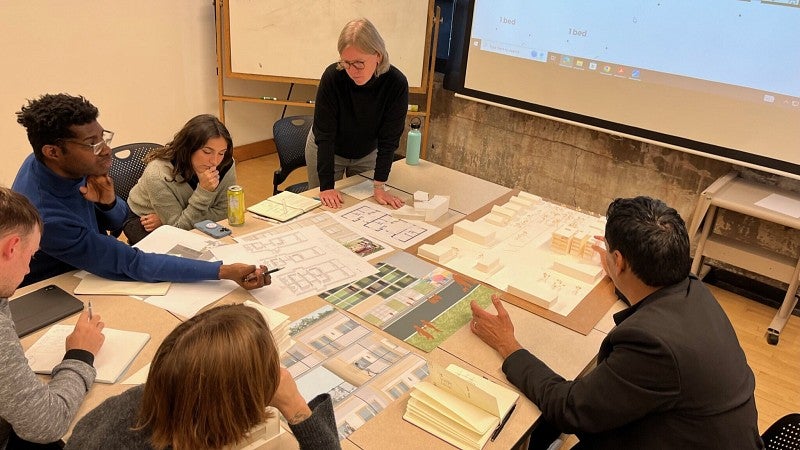
Students will be introduced to content before class, then actively apply the knowledge in class
To help her architecture students make better use of their time, Christina Bollo wants to flip the script – or more precisely, flip the classroom.
Bollo, an assistant professor in the School of Architecture and Environment, received funding this year for her teaching proposal from the Tom and Carol Williams Fund for Undergraduate Education. The Williams Fund has supported UO faculty ideas related to undergraduate teaching and curricula since 1996 through an instructional grant program.
Bollo was an architect by trade before becoming an academic. She earned her doctoral degree at Oregon in 2015 and came back to teach here in 2023 after working at the University of Illinois Urbana-Champaign.
One of Bollo’s classes is teaching health and well-being in the built environment to both architecture and interior architecture students. Her proposal involves instituting a “flipped classroom” approach she used while at Illinois.
In a flipped classroom, students are introduced to content before coming to class and then apply this knowledge in class, rather than the more common practice of introducing concepts in class and assigning students projects to be completed at home
Before coming to class, students will spend 90 minutes to two hours watching short videos of lecture segments. Some of the videos feature Bollo, some are commissioned by Bollo, and some are in the public domain.
Then the students come to class and create collaborative in-class activities in teams of four to six students. For example, the outside class content may have been about “third places” or common spaces such as in a dormitory or coffee shop. The students work together to do research and create a presentation on the topic for other students in the class
“They are applying lessons of the class to little projects they do together in an active learning environment,” she said. “Active learning is a huge deal at Oregon.”
This active learning approach includes investigating, discussing and creating with groups of various sizes. At the start of each session, students work individually or in pairs to collect information related to the topic at hand, and then bring that information to their team of six students. The team analyzes the information and creates a short presentation. Two teams then present to each other on a monitor and discuss what they have learned.
This model means students come to class just once a week, instead of two, which is critical for architecture students who spend 12 hours a week in the studio.
“They can do the learning on their own,” she said. “They can watch videos at the gym or while commuting on the bus or at home. The idea is they don’t need to be captive in the classroom to learn. And the time they do spend in the classroom is well spent.”
Historically, this course has been taught at the UO with two lecture classes a week plus a lab session. That’s a lot of time for a four-credit course, Bollo said, and sitting in a lecture hall with 150 other students feels more passive compared to watching bite-sized videos and then working with other students on a project.
Bollo will use the Williams award to commission new videos from professional designers from around the globe, talking about their work.
By Tim Christie, Office of the Provost Communications
